Patrick
Fenton
Jack
Kerouac's Queens -
The Lost Years

The
writer Jack Kerouac lived in Queens, New York for 12 years, the longest
he lived anywhere in New York. It is a period of his life that has gone largely
unnoticed, mainly because Kerouac, who died in 1969 at age 47, never spoke much
to anyone about it.
My
main goal in putting this map together is to make available to scholars, students
and Kerouac fans for the first time a map that verifies the existence of these
years, a map that traces the places in Ozone Park and Richmond Hill
that is so much a part of his literary legacy.
These
years, what I refer to as “the lost years of
Jack Kerouac’s Life“, because up until recently, there
was little written about them, are all part of the puzzle of who he really was.
When I first went out to Ozone Park in 1989 on assignment for New York Newsday,
the only person who knew he ever lived there was Jimmy Breslin.
“I
knew Jack for many years , and I only heard him mention Queens once,” said
the musician David Amram. “One night in the late 50’s I was riding
in a car on the Long Island Expressway with him, and as we passed by Queens, he
gave this little gesture with his hand. It was a French Canadian sort of thing.
And he said,’ I used to live over there.’ ”
“We
spent a lot of time walking around Richmond Hill. Jack loved to stop in some of
the rough Neighborhood bars where he felt at home.”
Joan
Haverty, his late wife.
During
his 12 years living in Queens, Kerouac, with a dime-store notebook in his back
pocket, frequently roamed the streets from Sutphin Boulevard in Jamaica
to Cross Bay Boulevard in Ozone Park to Rockaway, where he
liked to stare out at the Atlantic Ocean.”
“Take
the E Train to Suthphin Boulevard, and walk to the Long Island
R.R. underpass and turn right along R.R. embankment until you get across Van
Wyck Expressway and my corner.” (A Christmas Eve invite to poet Allen
Ginsberg.)
I
want people to know that Kerouac wrote much of his major work in the county of
Queens, New York and if they come looking for him, they will find him. Hopefully,
this map will also inspire the local artists and writers of Queens to create a
first “QUEENS CELEBRATES KEROUAC “DAY. I lift the first pint
to them!
Pat
Fenton
WebEd
Note:
Clicking on the picture for each location below will display a
MapQuest
map of the location, once on the MapQuest Page you may print this map or query
MapQuest
for directions to these locations.
A
Queens Literary Trail of
The Lost Years of Jack Kerouac's Life
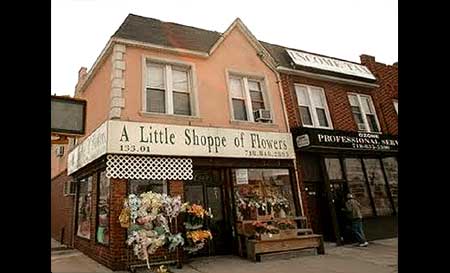
Jack Kerouac House
133-01 Cross Bay Boulevard
From
1943 to 1949, Jack Kerouac, the chronicler of the Beat Generation, lived over
a drugstore in Ozone Park, where he wrote his first novel ”The
Town and the City.” (1950) While creating parts of what would
become the seminal novel of his generation, “On
the Road,” he worked as a soda-jerk in the drugstore downstairs.
Here, from a pay phone booth, he would receive calls from Neal Cassady
and Allen Ginsberg with the number VA 3-9822.
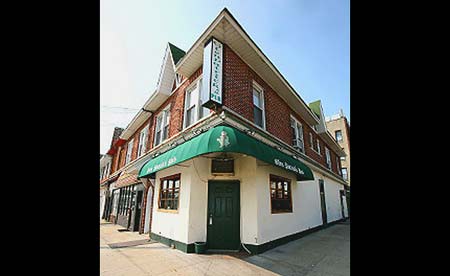
Glen
Patrick's Pub
133-10 Crossbay Blvd. Ozone Park
According
to Ed White, a friend of Kerouac’s who appeared in “On
the Road” as “Tim Grey,” “he liked to
go to this bar across the street from his house (now called Glen Patrick‘s
Pub) and fill his mother’s teakettle up with draft beer.” Kerouac
drank there with his father, and at other times with Neal Cassady, and
Lucian Carr. In his book, “Vanity
of Duloz,” he talks about his father buying Carr a beer there
one Summer afternoon.
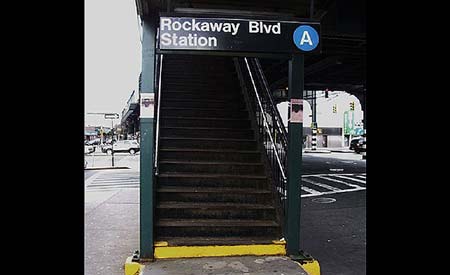
EL
Line Rockaway Boulevard Train Station
Each morning, when Queens
commuters make their way up the long staircase of the elevated line at Rockaway
Boulevard and Cross Bay, and rush to grab the train to their 9 to 5 gigs in
New York City, few, if any, are aware that the writer Jack Kerouac once rushed
up these same steps with his “canvas bag“ slung over his shoulder, and
walked off into American Literary history as he started his “On
the Road “ journey across America in 1947.
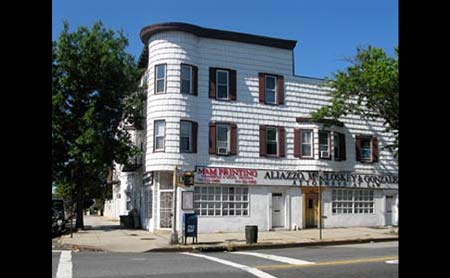
“Little
Kid's Library"
95-16 101st Ave. Ozone Park
Once a Children’s
Library where Jack Kerouac planned his “On the Road” journey:”
I’d been pouring over maps of the U.S. in Ozone Park for months, even reading
books about the pioneers and savoring names like Platte and Cimarron….“The
building is now a small church. In an earlier draft of “On the Road,”
called “Visions of Cody,” Kerouac described the library as a “little
kid’s library at the corner of Jerome Avenue (later changed to 101st Avenue)and
Cross Bay Boulevard, where (of course adult books too) old silver rimmed ladies
answered all your questions about (if you are question asking type)where to find
the Cimarron River.”)
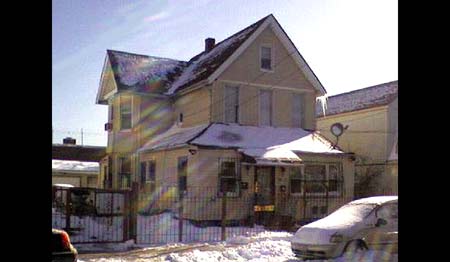
Richmond
Hill House
94-21 134th Street - 1950 to 1955
Jack
Kerouac wrote three books here, the “Subterraneans” (which He wrote
in 3 days), “Maggie Cassidy“, and “Book of Dreams.” The poet
Allen Ginsberg frequently came to visit him here. “His room was on the second
floor with a window that faced the street. One day he gave me a writing lesson
in that room. He sat me down at his typewriter and taught me spontaneous prose
-- straight to the page as it comes into your mind. Jack was brilliant. He was
a genius” - Allen Ginsberg
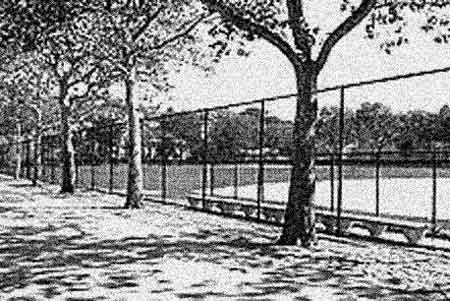
Phil
Rizutto Park
125 St Atlantic Avenue, Richmond Hill
(Originally
named “Smokey Oval Park“)
In “On the Road”, Kerouac,
who used to come here with Neal Cassady to play tough, pick-up basket ball games
with local kids, describes it as “the sooty field by the Long Island Railroad.“
“‘We were like hot rock blackbelly tenor man mad of American back alley
go-music trying to play basketball against Stan Getz and Cool Charlie.” J.K.
Later, the future “King of the Beats” describes how they walked back
to his mother’s house throwing a ball back and forth across Atlantic Avenue.
Van
Wyck Expressway and Atlantic Avenue
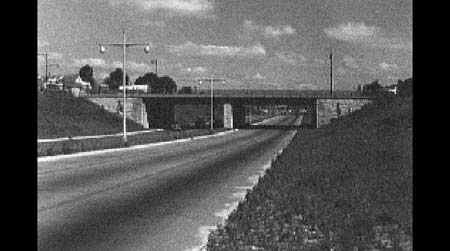
The
overpass at the VWE and Atlantic Ave
-
Richmond Hill, around the corner from Kerouac’s house on 134th Street -
Often, when Allen Ginsberg came to visit, the two of them would go there to talk.
He once described the sunken highway to Ginsberg with disdain as ,‘a bowling
alley of cars.’ “He would talk about how he thought it was terrible
that they could run a highway like this through a neighborhood and ruin it. He
later wrote a manuscript about this called, ‘cityCityCITY.’” Allen
Ginsberg.

North
Side of Overpass VWE and Atlantic Ave
-
The site of a real life scene between Jack
Kerouac and Neal Cassady that he described in “On the Road” -
“Good-bye,
good-bye. Dean walked off in the long red dusk. Locomotives smoked and reeled
above him. His shadow followed him. It aped his walk and thoughts and very being….
He yelled something I didn’t catch . He ran around in a circle. All the time
the closer to the concrete corner of the railroad overpass. . ….I waved back.
Suddenly he bent to his life and walked quickly out of sight.”
Acknowledgements
David
Amram - for all his support all these years.
John
Sampas - for the same.
Denis
Hamill - New York Daily News
Marisa
Berman - Queens Historical Society
Nicholas
Hirshon - New York Daily News
James
Walck - m2hMedia
- for his support and for making this electronic version of
"Jack Kerouac's Queens -
The Lost Years" possible
at insomniacathon.org
.
-
A Stoopdreamer Production -
Copyright
2009 - All rights reserved.
